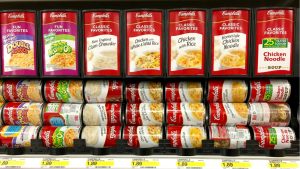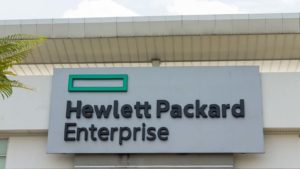For the long-term investor, the stock market offers a diverse range of sectors. And even with a limited budget, one can build a well-rounded portfolio. However, given the possible stock market volatility, investors understandably look for stable, recession-proof equity picks. By focusing on fundamentally sound businesses, especially when they’re undervalued by the market, patient investors will likely be rewarded down the road.
So now, let’s explore three of the best stocks to buy with $1,000 this month.
Franco-Nevada (FNV)

Franco-Nevada (NYSE:FNV) is a gold-focused royalty and streaming company. It offers investors exposure to precious metals without the operational risks associated with traditional mining. With a diversified portfolio of high-quality assets and a proven track record of delivering consistent returns, FNV is a stalwart within the commodities segment.
This business model typically translates into consistent cash flow. However, while the royalty and streaming model offers stability, it may also limit potential upside compared to directly owning mining companies. Franco-Nevada announced Q4 and full year 2023 results on March 5. Revenues came in at $303.3 million, down 5% year over year (YOY). Earnings-per-share (EPS) was 90 cents. No debt and a rather healthy $2.4 billion of available capital could easily enable management to make attractive acquisitions in an environment where many project developers are potentially capital-constrained.
Franco-Nevada has gained about 4% year to date (YTD). And the broader market measured by the S&P 500 is down 2% YTD. FNV shares are trading at a price to book (P/B) of 3.2, a level similar to several peers.
Gold prices have remained stubbornly high amid stubborn inflation and economic uncertainty, which could bode well for FNV’s future royalty revenues. Meanwhile, the 12-month median price forecast stands at $135.0, presenting a 17% upside potential from current prices. Finally, Franco-Nevada stock currently yields 1.1%.
Campbell Soup (CPB)

Founded in 1869, Campbell Soup (NYSE:CPB) remains a household name for soups and food products like pasta sauces and V8 juices. Further, it stocks Pepperidge Farm cookies, Goldfish crackers, and Cape Cod potato chips.
The food and beverage giant announced Q2 of 2024 results on March 6. Revenues were close to $2.46 billion, down 1% YOY while the diluted EPS held at 80 cents. Soon, management expects to complete the acquisition of Sovos Brands, best-known for Noosa yogurt and Rao’s marinara sauce.
Campbell Soup may not sound as exciting as a tech startup, but comfort food easily translates into stability of income. After all, even during economic downturns, people crave their chicken noodle soup. As a result of consistent sales, the company’s dividend yield stands at 3.5%.
Yet, CPB has started 2024 on the back foot and declined 2.2%, offering potential investors a better entry point. The shares are exchanging hands at around 13.5 times forward earnings and 1.3 times sales, while 12-month median price forecast is $45, with an upside potential of 6.5%.
Hewlett Packard Enterprise (HPE)

Finally, we have Hewlett Packard Enterprise (NYSE:HPE) as one of the best stocks to buy with $1,000. The company offers a range of enterprise technology products and services including servers, networking solutions, cloud services, and IT consulting.
The tech giant released Q1 of 2024 results in late February. Revenues were $6.8 billion, down 14% from the same quarter for the prior year and EPS was 29 cents down 24% YOY.
In January, HPE and prominent AI-player Juniper Networks (NYSE:JNPR) announced a definitive agreement. The firm will acquire Juniper for $40.00 per share via an all-cash transaction. Analysts highlight that this deal places HPE at the forefront of high-growth within the AI networking space. It will enable it to capitalize on the accelerating trend of digital transformation.
So far in 2024, the firm has returned 6% and the dividend yield stands at 2.9%. Meanwhile, the shares are trading at 9.8 times forward earnings and 0.85 times sales. Interested long-term investors may regard a decline toward the $17 level as a better entry point.
On the date of publication, Tezcan Gecgil did not have (either directly or indirectly) any positions in the securities mentioned in this article. The opinions expressed in this article are those of the writer, subject to the InvestorPlace.com Publishing Guidelines.
Tezcan Gecgil, PhD, began contributing to InvestorPlace in 2018. She brings over 20 years of experience in the U.S. and U.K. and has also completed all 3 levels of the Chartered Market Technician (CMT) examination. Publicly, she has contributed to investing.com and the U.K. website of The Motley Fool.
